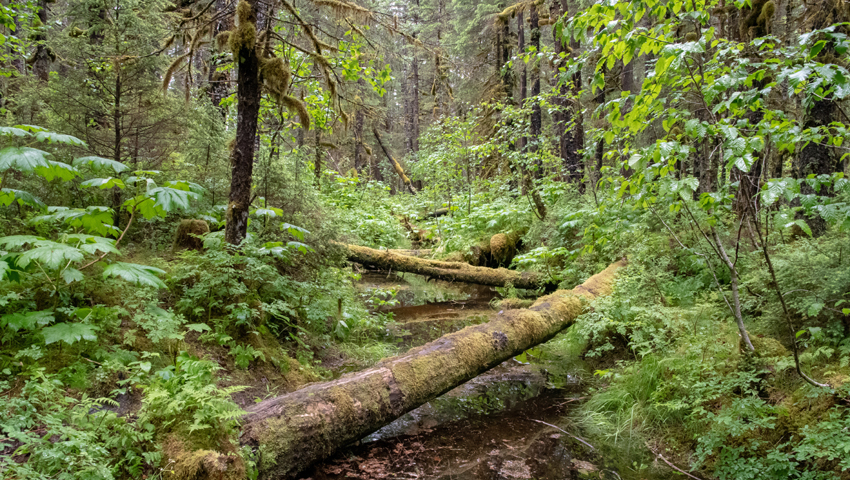- Forests have the potential to capture 226 Gigatonnes (Gt) of carbon in areas where they would naturally exist.
- This forest potential can only be achieved alongside emissions cuts.
- Sixty-one% of the forest potential can be achieved by protecting existing forests and allowing them to regrow to maturity.
- 39% can be achieved by reconnecting fragmented landscapes through community-driven ecosystem restoration and management.
- A natural diversity of species is needed to maximize the forest carbon potential.
- Ecologically responsible forest restoration does not include the conversion of other ecosystems that would not naturally contain forests.
Constantin Zohner, a senior researcher at ETH Zurich, said, “Global restoration is not only about trees. We have to protect natural biodiversity in all ecosystems including grasslands, peatlands, and wetlands that are equally essential for life on Earth.”
RESEARCH results published in the journal, Nature, show that realistic global forest carbon potential is approximately 226 Gigatonnes (Gt) of carbon.
The study, which involved hundreds of scientists around the world, highlights the critical importance of forest conservation, restoration, and sustainable management in moving towards international climate and biodiversity targets. The researchers stress that this potential can be achieved by incentivising community-driven efforts to promote biodiversity.
The forest carbon potential has been a highly controversial topic. Four years ago, a study published in the journal Science found that the restoration of forests could capture over 200 Gt of carbon – which could draw down approximately 30% of excess anthropogenic carbon. While this study elevated a discussion about the role of nature in fighting climate change, it also raised concerns around the adverse environmental impacts of mass tree plantations, carbon offsetting schemes, and greenwashing. While some scientific studies have supported the scale of this finding, others argued that this forest carbon estimate could be up to 4 or 5 times too high.
To address this controversial topic an international team of hundreds of researchers led by the Crowther Lab at ETH Zurich joined forces to build an integrated assessment using a comprehensive range of approaches, including vast ground-sourced data and satellite datasets.
Achieving forest carbon potential
Due to ongoing deforestation, the total amount of carbon stored in forests is ~328 Gt below its natural state. Of course, much of this land is used for extensive human development including urban and agricultural land. However, outside of those areas, researchers found that forests could capture approximately 226 Gt C in regions with a low human footprint if they were allowed to recover. Approximately 61% of this potential can be achieved by protecting existing forests, so that they can recover to maturity. The remaining 39% can be achieved by reconnecting fragmented forest landscapes through sustainable ecosystem management and restoration.
Lidong Mo, a lead author of the study, said, “Most of the world’s forests are highly degraded. In fact, many people have never been in one of the few old growth forests that remain on Earth. To restore global biodiversity, ending deforestation must be a top priority.”
The dataset revealed that biodiversity accounts for approximately half of the global forest productivity. As such, the researchers highlighted that, to achieve the full carbon potential, restoration efforts should include a natural diversity of species. In addition, sustainable agricultural, forestry, and restoration practices that promote biodiversity have the greatest potential for carbon capture.
Redefining restoration
The authors stress that responsible restoration is a fundamentally social endeavour. It includes countless actions such as conservation, natural regeneration, rewilding, silviculture, agroforestry, and all other community-driven efforts to promote biodiversity. It requires equitable development, driven by policies that prioritize the rights of local communities and Indigenous people.
Thomas Crowther, the senior author of the paper and a professor at ETH Zurich, said, “We need to redefine what restoration means to many people. Restoration is not about mass tree plantations to offset carbon emissions. Restoration means directing the flow of wealth towards millions of local communities, Indigenous populations, and farmers that promote biodiversity across the globe. Only when healthy biodiversity is the preferred choice for local communities will we get long-term carbon capture as a bi-product.”
The researchers conclude that ecologically responsible forest restoration does not include the conversion of other ecosystems that would not naturally contain forests. Constantin Zohner, a senior researcher at ETH Zurich, said, “Global restoration is not only about trees. We have to protect natural biodiversity in all ecosystems including grasslands, peatlands, and wetlands that are equally essential for life on Earth.”
Nature for climate
This study brings to light the critical importance of natural, diverse forests in contributing to 30% of carbon drawdown potential. However, forests cannot be a substitute for cutting fossil fuel emissions. If emissions continue to rise, the study warns, then on-going droughts, fires, and warming will threaten forests and limit their ability to absorb carbon.
Crowther said, “My biggest fear is that corporations misuse this information as an excuse to avoid cutting fossil fuel emissions. The more we emit, the more we threaten nature and people. There can be no choice between reducing emissions and protecting nature because we urgently need both. We need nature for climate, and we need climate action for nature.”
Read the study, Integrated global assessment of the natural forest carbon potential
